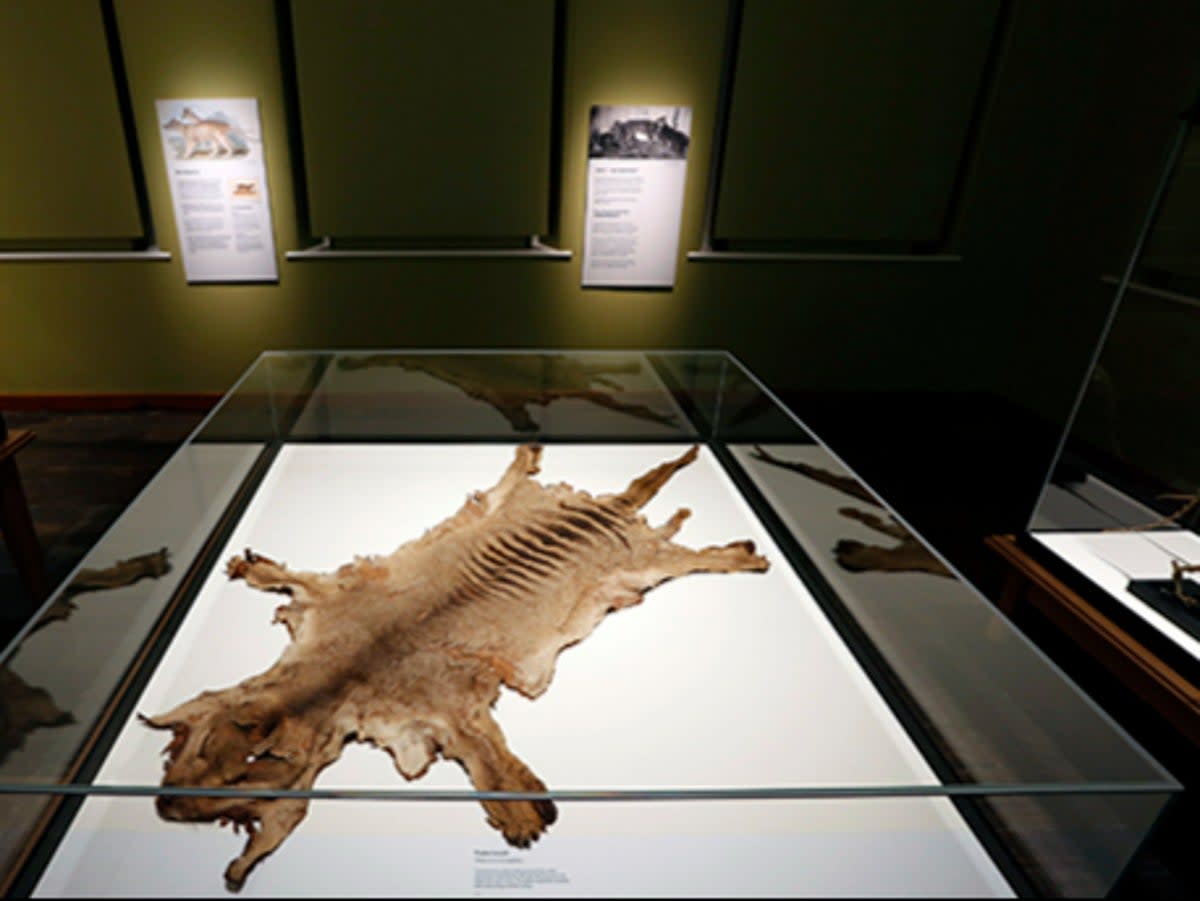Remains of last Tasmanian tiger discovered after decades-long mystery

The mystery surrounding the remains of the last known Tasmanian tiger has been solved with the discovery of the animal’s skin and skeleton in a cupboard of an Australian museum.
The female thylacine or Tasmanian tiger died at the Hobart Zoo on 7 September 1936, marking an end to her species.
Its remains were transferred to the Tasmanian Museum and Art Gallery (TMAG) and it was assumed that its skin and skeleton went missing after it was used to explain the animal’s anatomy and taken around the country as a travelling exhibit.
“For years, many museum curators and researchers searched for its remains without success,” researcher Robert Paddle said.
“No thylacine material dating from 1936 had been recorded in the zoological collection, and so it was assumed its body had been discarded.”
It was only after an unpublished museum taxidermist’s report was discovered by Dr Paddle and another curator, that the last thylacine was identified lying in the cupboard of the museum.
The report dating back to 1936-1937 mentioned a thylacine among other specimens that were studied during that year. It prompted a review of all thylacine skins and skeletons at the museum which led to the missing female specimen lying in a cupboard.
Museum curator of vertebrate zoology Kathryn Medlock said the failure to catalogue and record the specimen at that time resulted in it being used for educational purposes and museum staff unknowingly handling the last remains of the species.
“It was chosen because it was the best skin in the collection, we didn’t know then it was the last one,” she said.
“This particular skin and skeleton that we’ve discovered have rarely been on display.”
TMAG director Mary Mulcahy said: “It is bittersweet that the mystery surrounding the remains of the last thylacine has been solved, and that it has been discovered to be part of TMAG’s collection.”
Dr Paddle said that the female thylacine was captured by trapper Elias Churchill in southern Tasmania and sold to the zoo in May 1936.
“The sale was not recorded or publicised by the zoo because, at the time, ground-based snaring was illegal and Churchill could have been fined,” Dr Paddle said.
The thylacine died after a few months and its body was transferred to TMAG.
The last remains of the thylacine are now on display at the museum in Hobart.


